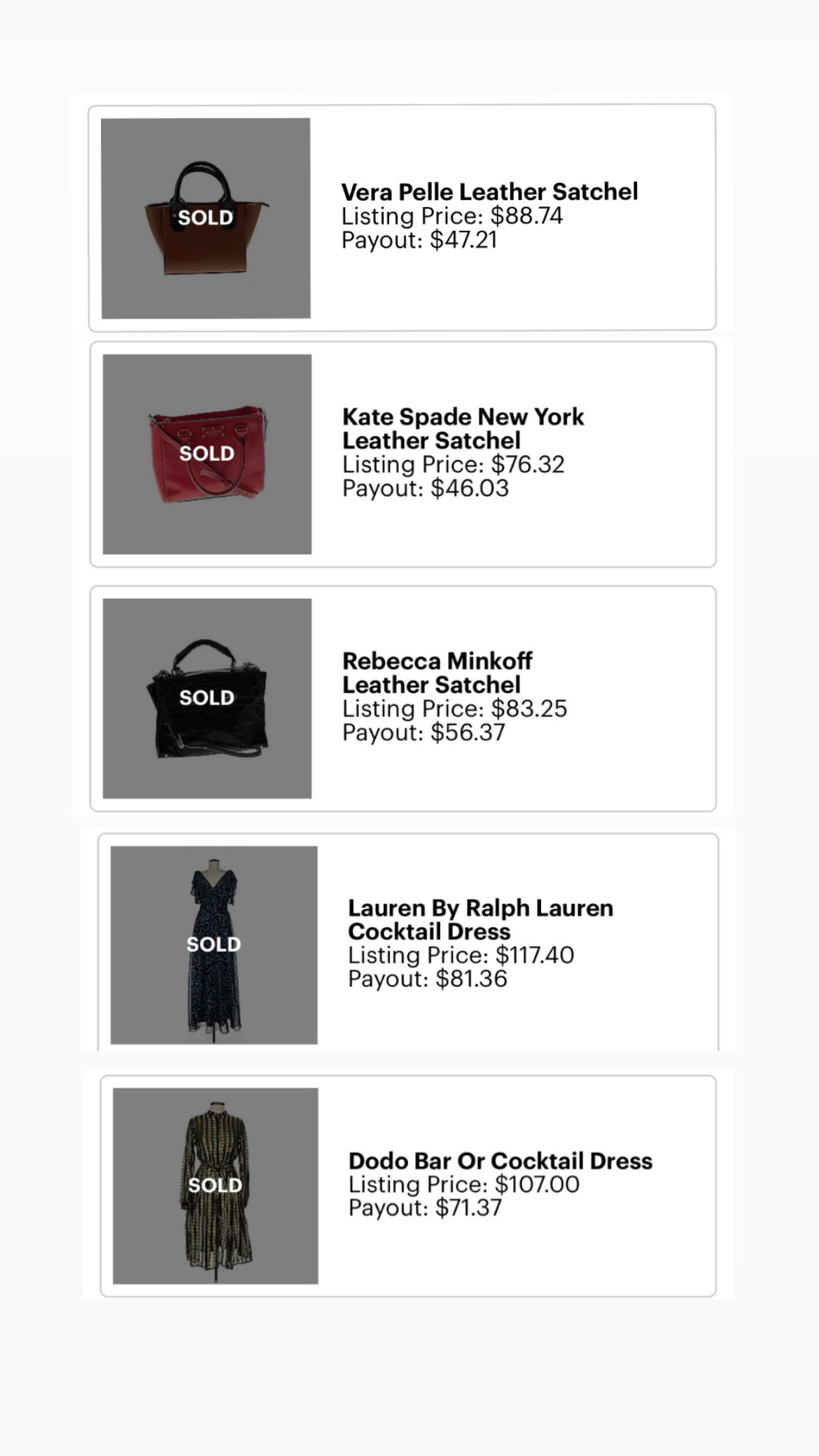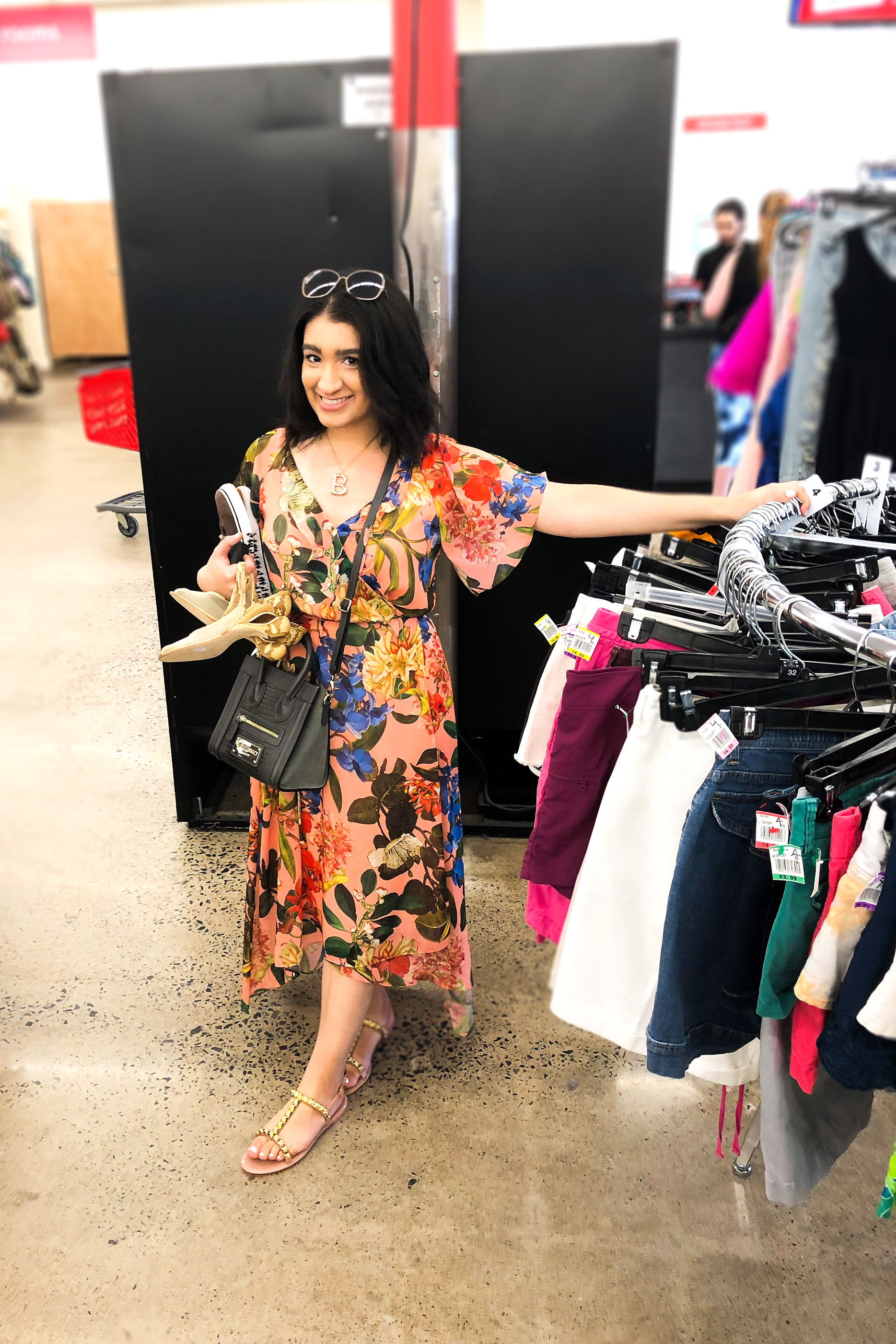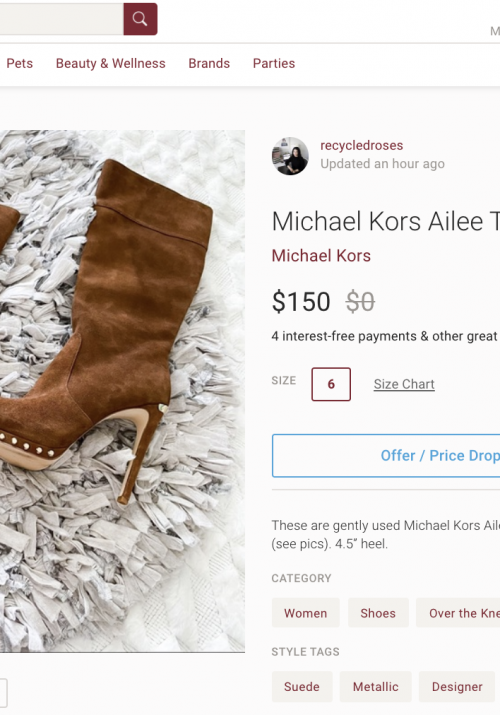
As many of you know, I have incorporated the use of ThredUp into my reselling business earlier this year. I primarily use this platform to: (1) liquidate older items that I no longer wish to sell on primary reselling accounts and (2) make a passive income on items that I would not be able to successfully sell on my primary reselling accounts. In a previous post, I discussed how I use ThredUp for liquidation (be sure to visit THIS post) so today, I wanted to share with you some insight into how I decide which items are worth sending into ThredUp to maximize my passive income profits.
Utilizing ThredUp as a Passive Income Stream
When it comes to my reselling business, I find that I have the most success when I have multiple income streams. This allows me to have a stable reselling income each month without having to rely solely on one source of income. I will admit that having multiple income streams can be quite difficult at times. This year, I decided to utilize ThredUp as a passive income stream. In order to sell items on ThredUp, all I have to do is request a mailing label and then send my items to the company. From there, they will then photograph, measure, authenticate, and list my items for me; All I have to do is wait for my items to sell and then claim my earnings. For any items that do not sell, I can request these items back before the consignment period ends for an additional fee. Additionally, ThredUp handles all of the customer service and tedious reselling tasks so that I don’t have to.
What Items Are Worth Selling on ThredUp Right Now For Profit
Over the past few months, I have been experimenting with ThredUp by sending in a variety of items and analyzing how well they perform. After reviewing all of the data, I wanted to share with you a summary of my findings as these will be the items that I will be sending into them for the foreseeable future:
Designer and Mid-Tier Purses and Wallets– I have found that when I can source these items at a reasonable price point, I have a much better chance of selling these items on ThredUp than attempting to sell them on other reselling platforms where they tend to be oversaturated. Examples of bag brands that have performed well for me so far include Tory Burch, Michael Kors, Coach, Rebecca Minkoff, MCM, and Moschino. Additionally, bags that may not have a designer name on them but are leather and Made in Italy can perform well.
Cocktail Dresses– I am still trying to figure out exactly what constitutes as a “cocktail dress” on ThredUp but if you are able to find a dress that they mark as a cocktail dress on their website, then you have the potential to make a great profit on this item. Cocktail dresses are typically listed at a higher value and have the potential to sell at higher price points. I have had a few dresses listed as cocktail dresses and they have all sold for over $70 with most of them selling for over $100.
Outerwear– Many jackets, blazers, and coats can sell for a high profit on ThredUp depending on the brand, how in-demand the style is, and what material it is made from. Outerwear that is made from leather and wool will typically sell for more than items that are made from polyester and other synthetic materials. Additionally, I have had some luck selling suiting and blazers on ThredUp; My best selling suiting brand so far has been Escada.
Designer Clothing and Shoes- Luxury designer clothing and shoes are automatically priced higher on ThredUp due to their high retail price. After sending in many designer items to ThredUp, I have found that the items that perform best for me include: dresses, blazers/jackets, wool sweaters and coats, silk clothing, and leather/suede items. Within these items, I have had the best luck with items that are in high demand when they are listed on the site.

How to Figure Out What Will Sell Well on ThredUp
Learning what will perform well on ThredUp takes a little research and experimentation to figure out. After selling on the app for a few months now, I have discovered a few tricks that might help you to figure out what will sell well on ThredUp:
Pick a category and sort it so that it is set from highest price to lowest price– This will give you insight into what items and brands are being priced the highest on the website. Sellers can mark up the prices of their items before they are listed but they are often capped at a certain amount. Scrolling through these results can give you some insight into what items yield higher price points and how in-demand an item is by looking at its’ favorites.
Pay attention to how much of a discount is being offered on an item- This is important to note as the higher the discount being provided, the longer that the item has been listed on the site. If these items do not sell within their consignment period, they will be removed from the site. I personally like to use this data to determine how in-demand an item is and if the price point is too high for the item.
Learn the payout structure– Understanding ThredUp’s payout structure can be helpful in determining whether or not your profit margins will be met. In some cases, it might be better to sell your items on another reselling platform depending on your price of goods. I have found, however, that there are some instances where I can sell an item for more money on ThredUp compared to my main reselling platforms.
Here are a few examples of items that have performed better for me on ThredUp than they would have on Poshmark or Mercari:

I hope that you find this post helpful! If you have any questions or just want to chat, please reach out!
If you don’t already, be sure to check out my Instagram for more Reselling Tips at @ RecycledRosesGuide (Click HERE) and my Facebook page HERE.
You can instantly shop all of my looks by following me on the LIKEtoKNOW.it shopping app HERE.
To get email notifications for my next blog post and to receive my monthly Reseller Recap (with freebies), sign up for my emails below:
Baci,



